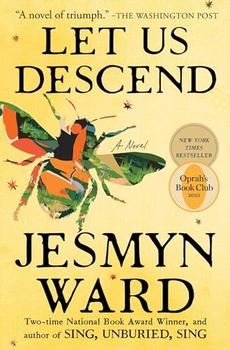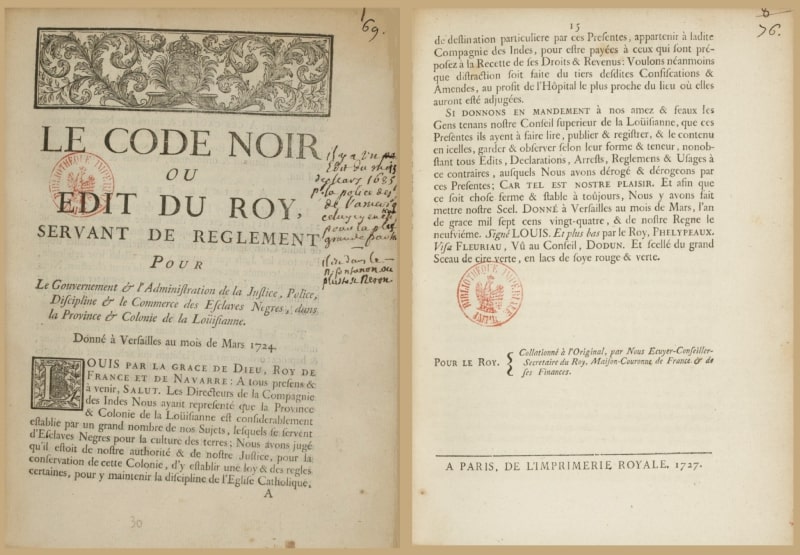Summary | Excerpt | Reading Guide | Reviews | Beyond the Book | Read-Alikes | Genres & Themes | Author Bio

A Novel
by Jesmyn WardThis article relates to Let Us Descend
 In Jesmyn Ward's Let Us Descend, one of Annis's enslavers is a woman. Typically, when people think about enslavers and those perpetuating slavery as a system, they often think about white men. Some may find it surprising that women played a significant role in the slave trade, too. Furthermore, white people were not the only ones who owned slaves or participated in upholding slavery. In Let Us Descend, one of the people facilitating Annis's sale is a free woman of color — a fact that reflects the reality of pre-Civil War New Orleans.
In Jesmyn Ward's Let Us Descend, one of Annis's enslavers is a woman. Typically, when people think about enslavers and those perpetuating slavery as a system, they often think about white men. Some may find it surprising that women played a significant role in the slave trade, too. Furthermore, white people were not the only ones who owned slaves or participated in upholding slavery. In Let Us Descend, one of the people facilitating Annis's sale is a free woman of color — a fact that reflects the reality of pre-Civil War New Orleans.
To examine how slavery functioned in the American South, it is imperative to understand the full scope of the slave trade, and many of us have an incomplete picture of this devastating history. One helpful angle in expanding our understanding is seeing how free people of color were cogs in the machine that kept it going.
Free people of color in the Americas have a complicated, robust history. This is especially true in Louisiana, where according to a 64 Parishes article, "[t]he earliest record of a free Black person in New Orleans dates from 1722, three years after the first ship arrived with enslaved Africans." Free people of color, or gens de couleur libres, significantly shaped the economic landscape, and their impact on the state has left a notable mark on its history. Free people of color first began to populate Louisiana along with French and Spanish immigration to the state. Some came as free people, but most arrived enslaved and were later emancipated, often through purchasing their own freedom. At the time, the immigrant society in the region supported the system of slavery but also predated the polarized concept of race found throughout other parts of early America. Mostly concentrated in New Orleans, gens de couleur libres were sometimes highly educated, holding prominent positions as composers and artisans. Others worked as carpenters, laborers, and deliverymen.
In 1724, Louisiana enacted the Code Noir, which regulated both the enslaved and free Black population throughout the state. Free people of color were directly recognized by Louisiana's Code Noir. On the one hand, it provided a little more lawful protection for them compared to surrounding states. Their freedoms weren't equal to those given to the white population, but they allowed for some financial growth. On the other hand, they could be re-enslaved if they were caught helping people who had escaped their enslavement. This created a de facto, complex divide between the free and enslaved. For free people of color, enslavement was just one misstep away.
One of the most shocking aspects of gens de couleur libres to many may be that some owned slaves. In "Free women of color and slaveholding in New Orleans, 1810-1830," Anne Ulentin writes that free people of color, including women, who owned slaves sometimes used them as workers for making artisan crafts or plantation laborers, or were involved directly in the business of the slave trade. Surviving receipts and documentation show former slaves-turned-free mortgaging out and purchasing slaves. Ulentin also emphasizes that "In the early years of the Spanish period … more free women of color bought slaves than free men of color," and provides an example of the economic impact slaveholding had for them: "Cécée Macarty was the largest slaveholder among free people of color in New Orleans. In 1830, she owned 32 slaves, and her fortune was worth $155,000. Macarty was listed among the wealthiest Black entrepreneurs between 1820 and 1865."
Overall, slavery in the American South was more multidimensional of an issue than many may think. Slave ownership by gens de couleur libres raises interesting questions. Did free people of color who owned slaves view them as separate pieces of property for the sake of their own economic freedom? Or did they feel trapped and forced to participate in a system that was fundamentally built on the backs of dehumanizing unemancipated Black people?
Pages from Louisiana's Code Noir, 1727
Photo by Ambre Troizat (CC BY-SA 4.0)
Filed under People, Eras & Events
![]() This "beyond the book article" relates to Let Us Descend. It originally ran in October 2023 and has been updated for the
September 2024 paperback edition.
Go to magazine.
This "beyond the book article" relates to Let Us Descend. It originally ran in October 2023 and has been updated for the
September 2024 paperback edition.
Go to magazine.
Your guide toexceptional books
BookBrowse seeks out and recommends the best in contemporary fiction and nonfiction—books that not only engage and entertain but also deepen our understanding of ourselves and the world around us.